NEW – Effective May 1, 2022!
- Emergency Drought Condition Water Reduction Policy Resolution
- Emergency Drought Condition Water Reduction Handout
Visit saveourwater.com for more ways to save water.
Get to Know Your Water Supply
Residing at the base of the majestic slopes of Mount Shasta, so often blanketed in snow, there is a common misperception that our City’s water supply is endless. While many residents take pride knowing our water supply is pure, untreated and gravity fed spring water, it is limited. In fact, recent data indicate the City’s primary water source, Cold Springs, may be particularly vulnerable to drought. Learn more about your water supply.
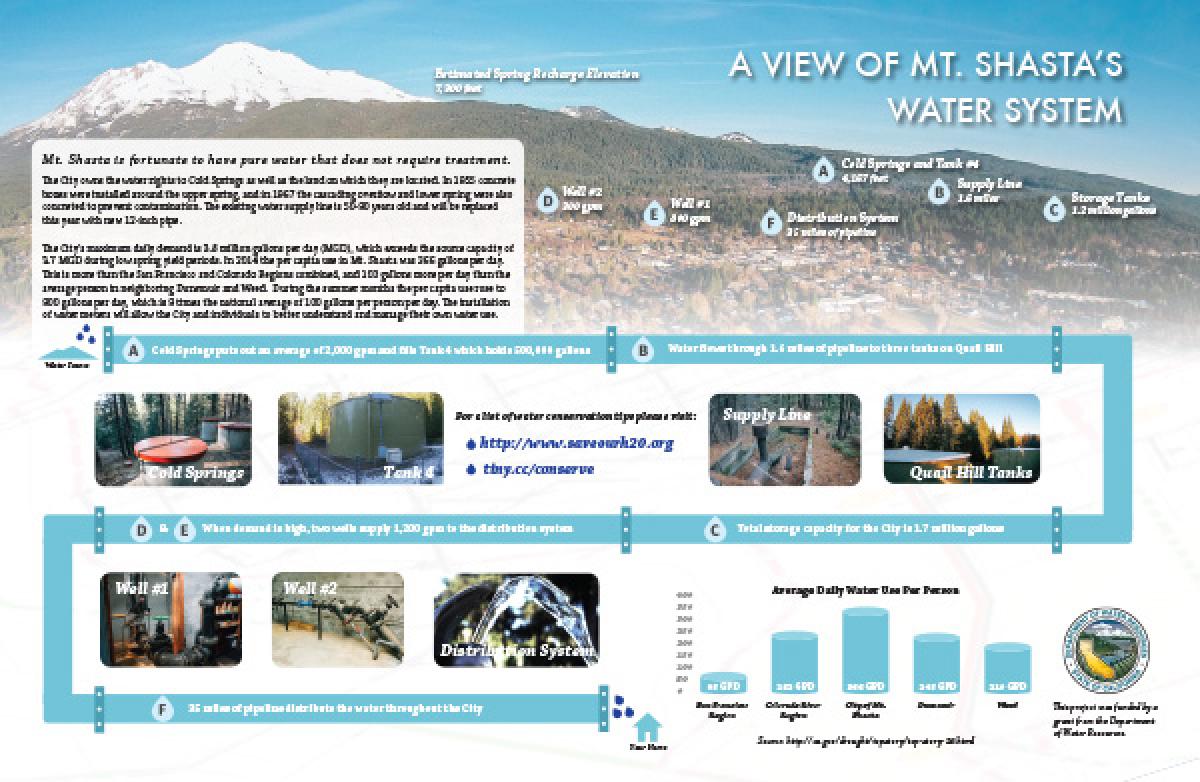
Click here to download PDF
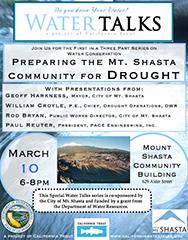
March 10th 2015: Preparing the Mt. Shasta Community for Drought
Learn about the severity of the drought in California, how our City water infrastructure works, and the new water projects being implemented this year.
Presentations:
→ Geoff Harkness, Mayor, City of Mt. Shasta
→ William Croyle, Department of Water Resources
→ Rod Bryan, City of Mt. Shasta
→ Paul Reuter, PACE Engineering
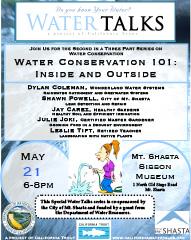
May 21st 2015: Beat the Drought: Water Conservation Inside and Outside
Join local and regional experts to learn about innovative ways to improve your water use efficiency both inside and outside of your residence or business.
Presentations:
→ Introduction by Meadow Fitton
→ Dylan Coleman, Wonderland Water Systems
→ Shawn Powell, City of Mt. Shasta
→ Julie Joki, Certified Master Gardener
→ Leslie Tift, Native Plants Specialist
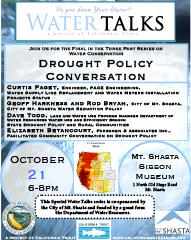
October 21st 2015: Drought Policy Conversation
Join City staff and State experts in a facilitated community brainstorm on the best drought policies.
Presentations:
→ Introduction by Meadow Fitton
→ Curtis Paget, PACE Engineering
→ Dave Todd, Department of Water Resources
→ Geoff Harkness, City of Mt. Shasta
This special Water Talks series was co-sponsored by the City of Mt. Shasta and funded by a grant from the Department of Water Resources. For more information, download the flyer (PDF, 46 Mb), or visit californiawatertalks.org.
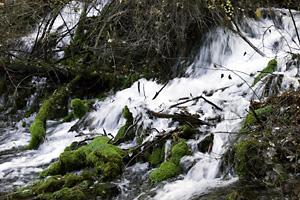
Living in such a beautiful area as Mt. Shasta, we can sometimes forget that conservation of our natural resources is important. We share our community with other people, wildlife and vegetation, and responsible consumption of these natural, and not unlimited, resources is both conscientious and appropriate.
Here are ten tips for saving water—a natural resource that should hold more value than gasoline because it is vital to life.
- Water your lawn ONLY when it needs it. Set your sprinklers for more days in between watering. (Saves 750-1,500 gallons per month) In times of drought, use a hose.
- Fix leaky faucets and plumbing joints. (Saves 20 gallons per day per leak stopped.)
- Don’t run the hose while washing your car. Place a spray fixture on your hose so the water won’t run continuously. Use a bucket of water and a quick hose rinse at the end. (Saves 150 gallons each time.)
- Install water-saving shower heads or flow restrictors in your home. (Saves 500-800 gallons per month.)
- Run only FULL loads in the washing machine and dishwasher. (Saves 300-800 gallons per month.)
- Shorten your showers. (A one or two minute reduction can save up to 700 gallons per month.)
- Use a broom instead of a hose to clean driveways and sidewalks. (Saves 150 gallons or more each time.)
- Don’t use your toilet as an ashtray or wastebasket. (Saves 400-600 gallons per month.)
- Capture tap water. While you wait for hot water (or colder water) to come through the pipes, catch the flow in a watering can to use later on house plants or your garden. (Saves 200-300 gallons per month.)
- Don’t water the sidewalks, driveway or gutter. Adjust your sprinklers so that water lands on your lawn or garden where it belongs—and only there. (Saves 500 gallons per month.)
